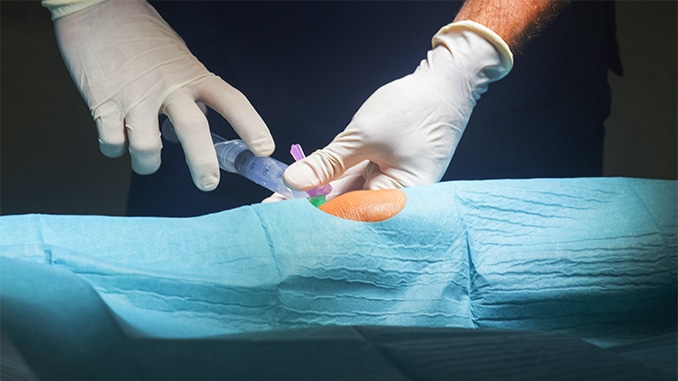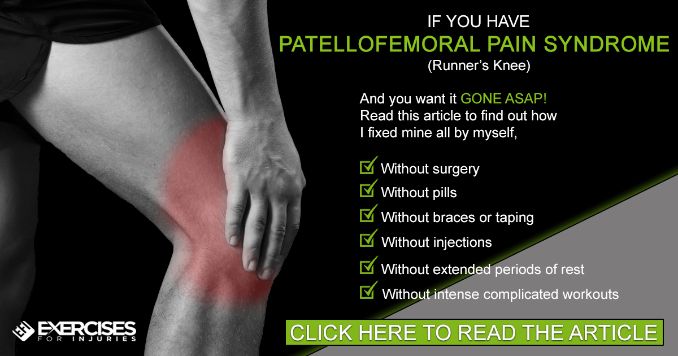
Knee pain is one of the most debilitating conditions of all. Plus, it can be very challenging to treat, and even harder to live with. You’ve certainly heard of people getting their knees injected to treat pain. Maybe your doctor is even recommending this to you.
Not all knee injections are the same, and each one has its indications, risks and potential benefits. Let’s look at the details of each kind of knee injection.
Corticosteroid Knee Injections
If you have osteoarthritis in your knee, you might benefit from a corticosteroid (steroid and cortisone) injection. Still, this is not the first line of treatment of knee arthritis. Typically, oral medications and physical therapy are used before considering steroid injection.
Corticosteroid knee injections have been used to treat the following conditions:
- Osteoarthritis
- Baker cysts
- Juvenile idiopathic arthritis
- Psoriatic arthritis
- Acute monoarticular gout
- Pseudogout
- Rheumatoid arthritic knees
Knee injections with corticosteroids may be used if you have a flare-up of significant pain in the knee. Steroid knee injections can give you symptom relief within 24 to 48 hours. Pain relief can last on average from six to 12 weeks. No more than three or four injections should be given per year, and you should wait at least six weeks between shots.
Complications of cortisone shots in the knee can include:
- Joint infection
- Nerve damage
- Thinning of skin and soft tissue near the injection site
- Worsening joint pain and inflammation
- Tendon damage or rupture
- Thinning of nearby bone (osteoporosis)
- Whitening or lightening of the skin around the injection site
- Death of nearby bone (osteonecrosis)
- Temporary increase in blood sugar
One of the biggest dangers of cortisone injections is that, in the long run, it may make the condition worse. Osteoarthritis is the breakdown of cartilage and bone in the knee joint. While steroids are a powerful anti-inflammatory agent, they also can lead to severe joint damage.
Hyaluronic Acid Knee Injections
Hyaluronic acid is found naturally in your knee joint to provide cushioning and lubrication. With osteoarthritis, the amount of this fluid can decrease, and the fluid can become thinner. For this reason, doctors may recommend an injection of hyaluronic acid, especially when steroid injections do not provide significant relief. For injection purposes, hyaluronic acid is extracted from rooster combs or generated by bacteria in a laboratory.
Hyaluronic acid injections are mostly used to treat osteoarthritis but have been used to treat knees affected by rheumatoid arthritis as well. The benefits appear to last for about five to six months. Different versions of this kind of treatment exist and some require multiple injections over several weeks. Treatment can be repeated after a six-month waiting period.
Beyond just providing extra cushion and lubrication, the injection may also work by:
- Anti-inflammatory mechanisms
- Promote partial joint healing
- Decreasing nerve sensitivity in the joint
The different types of hyaluronic acid injections are:
- Sodium hyaluronate (Euflexxa, Hyalgan, Supartz)
- High-molecular-weight hyaluronan (Monovisc, Orthovisc)
- Hylan G-F 20 (Synvisc, Synvisc One)
- Cross-linked hyaluronate (Gel-One)
Platelet-rich Plasma Knee Injections
This is another injectable treatment for some knee conditions. The procedure begins by taking blood from a vein in your arm. Your blood is then processed to remove nearly everything but platelets and plasma (the liquid, noncellular part of blood). The end result is platelet-rich plasma (PRP), which then gets injected into your knee.
PRP has a much higher concentration of platelets compared to normal blood. This means the concentration of growth factors can be five to 10 times higher than normal. Growth factors may be responsible for the healing and anti-inflammatory properties of PRP.
PRP has been used mostly for chronic tendon injuries and may be helpful for acute ligament and muscle injuries as well. For these reasons, PRP gets a lot of press since some high-profile athletes claim to have healed quickly after PRP injection. Also, for example, Tiger Woods received PRP to help him recover from an anterior cruciate ligament (ACL) tear in his knee.
For osteoarthritis, the benefits of PRP are still under investigation. However, some studies have shown PRP offers up to a six-month benefit and better outcomes compared to hyaluronic acid injections.
Botulinum Neurotoxin A Knee Injections
Botulinum neurotoxin A or “botox” injections into the knee may bring pain relief to some conditions. While not yet a widespread method of treatment, some research results are promising. In one study, 46 patients with fairly severe osteoarthritis were divided into two groups. One group had botox injected into the damaged knee while the other group received no injection.
The Botox group experienced significant improvement in pain symptoms compared to those who received no treatment. After one injection, the average decrease in knee pain was 42.6 percent after one week. After six months, pain relief decreased to 34.9 percent.
Knee Aspiration
In some cases, your knee may accumulate fluid due to injury, inflammation or infection. In these cases, your physician may need to remove fluid rather than inject a medication. This process is called knee joint aspiration or arthrocentesis. If the fluid is not infected, simple removal may provide significant relief. If signs of infection are present, you may need antibiotics.
In some cases, knee joint aspiration is done before other medications are injected. There are a few reasons this might be done, such as to:
- Make room for the medication to be injected
- Get a sample of the fluid to send for lab analysis
- Verify whether an infection is present or not
Knee Injection — What to Expect
These are the steps doctors usually take when injecting your knee:
- Clean the area with a brown liquid called povidone-iodine (commercially known as Betadine).
- Cover the area with a sterile drape or cloth
- Spray the knee with pain-killing aerosol (not done in all cases).
- Inject the area with pain medication to numb your knee.
- Aspirate (remove) fluid from the knee (not done in all cases).
- Deliver the medication by injection to the knee.
If the area of the knee is difficult to reach, your doctor may use an ultrasound or special X-ray machine (fluoroscopy) to help guide the procedure.
Who Should Not Have Knee Injections?
Not everybody can have their knee injected since the risk might be too high. Some of the contraindications to knee injection (especially steroids) are:
- Bacteremia, sepsis: Infection in the blood
- Periarticular or intra-articular infections: Joint infection, unless the injection is used to treat the infection
- Significant skin breakdown where the injection will be delivered
- Known sensitivity to the steroid injection
- Bone fracture or severe joint destruction
- Joint prosthesis: Artificial knee
- Uncontrolled coagulopathy: Blood clotting problem
PRP knee injections have their own special additional contraindications, including:
- Critical thrombocytopenia: Very low blood platelet count
- Unstable blood pressure or heartbeat
- Septic arthritis: Infected joint
- Cellulitis: Infected overlying tissues of the knee joint
- Adjacent osteomyelitis: Bone infection
- Platelet dysfunction syndrome
Knee Care Tips
While injections may be a part of treatment for knee pain, other lifestyle modifications may be helpful as well. Here are some strategies to help relieve knee pain:
- Minimize activities causing knee strain; take an elevator or escalator instead of the stairs; avoid heavy lifting and minimize squatting movements
- Avoid high-impact sports like running, tennis, basketball or soccer; choose knee-friendly exercises are swimming, cycling and walking
- Get rid of extra body weight; avoid carrying heavy weights or backpacks
- Use heat and ice for relief; if you’ve been on your feet all day, apply a bag of ice wrapped in a damp cloth for 20 minutes to each affected knee
- Consider using a knee brace or a cane if you have trouble with balance or mobility
- Consult with a physical therapist who specializes in knee problems
If you are looking for a fast, simple, safe and effective program to eliminate your stubborn knee pain and patellofemoral pain syndrome, then check out the Patellofemoral Syndrome Solution program, here!



